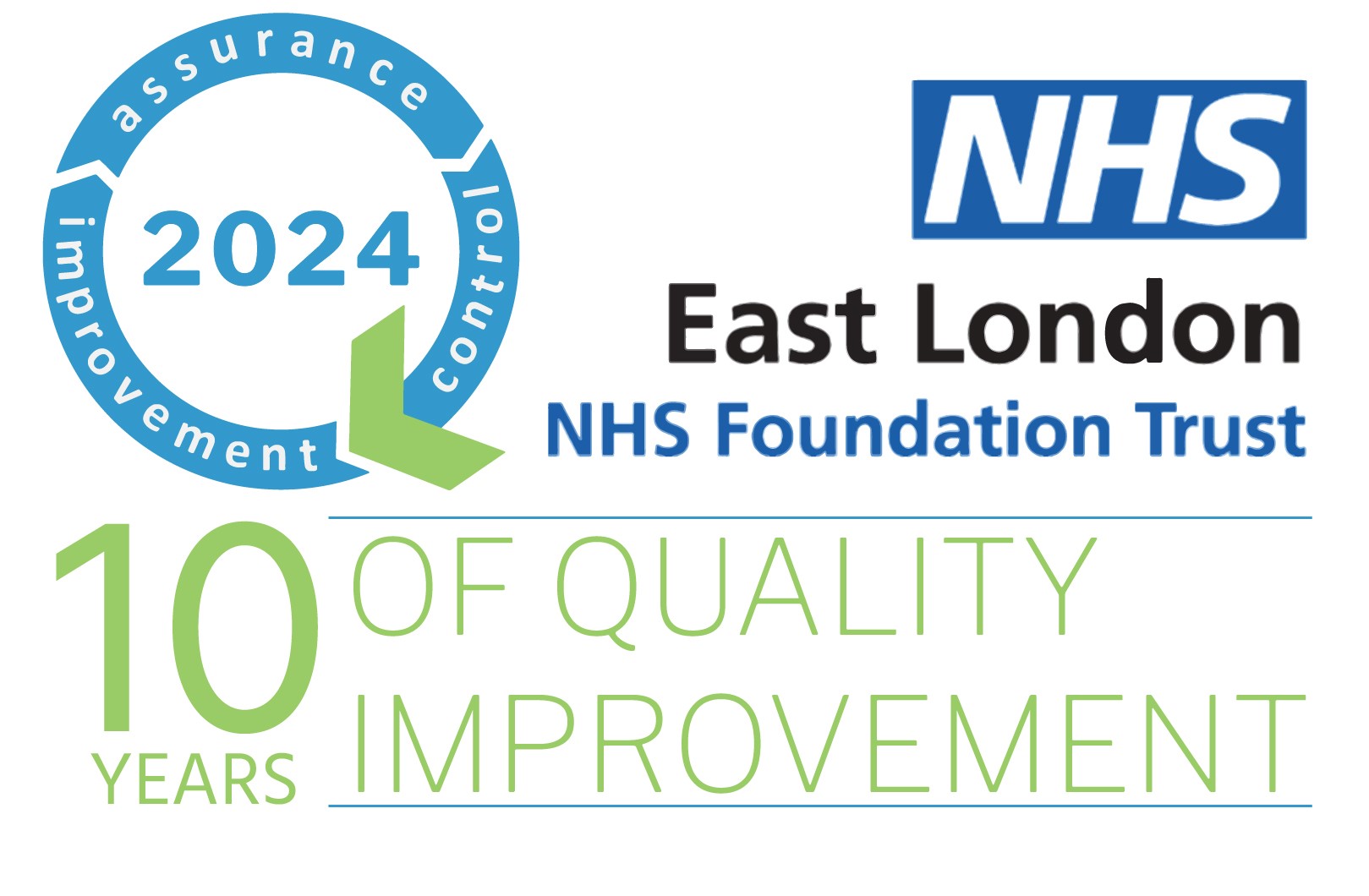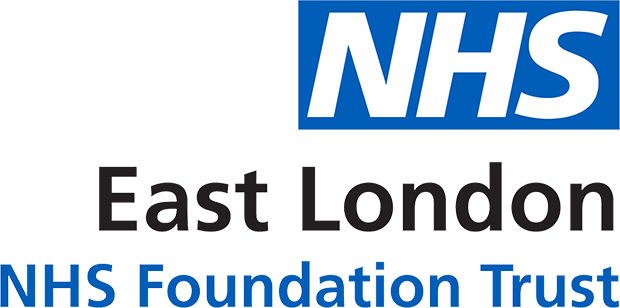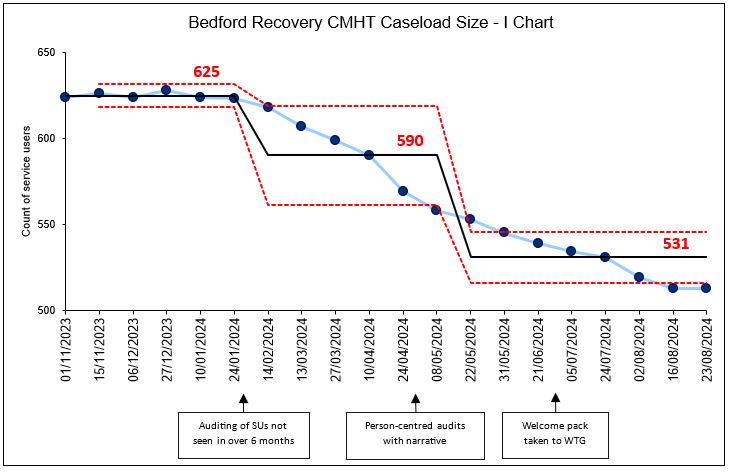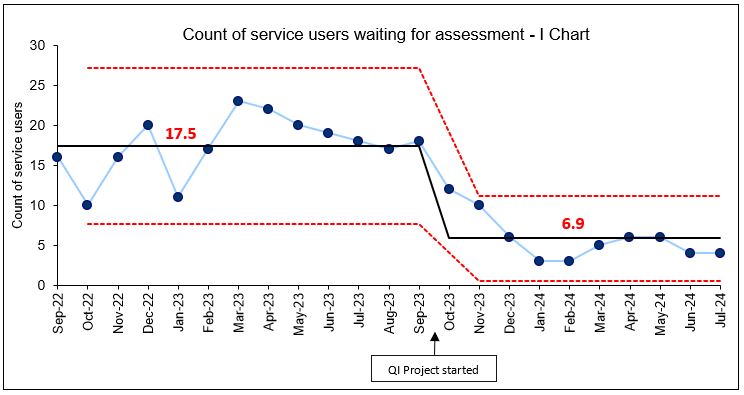Improving Flow by Focusing on Better Care Planning and Transitions
By Chloe Preston, Improvement Advisor
Bedford Adult Recovery Community Mental Health Team (CMHT) are carrying out a QI project to improve care planning and transitions, ensuring care that service users receive is needs-based and appropriate. By doing this, the team aim to reduce caseload sizes, waiting times, and the number of service users awaiting assessment.
Figure 1: The Bedford CMHT Recovery Team
What issue are the team trying to solve?
Since the pandemic and the community mental health transformation programme, Bedford Recovery CMHT has seen a continuous rise in their caseload, partly due to service users not being transitioned to primary care services in a timely manner. By October 2023, their caseload exceeded 600 service users, with many having been identified as requiring more in-depth and person-centred care plans. This prompted the initiation of the QI project, to address these issues and improve the overall system.
During away days, staff highlighted the need for better support in understanding the service offer and transitioning service users to the most appropriate care for their needs. For example, safely and collaboratively transitioning service users to primary care or partner organisations when they no longer require secondary care services.
The project aim is to work with staff and service users to safely and collaboratively reduce Bedford Recovery CMHT caseload by 20% by April 2025, and by a further 10% by September 2025.
How are they tackling this?
The team worked with both staff and service users to understand the problem, specifically, they wanted to better understand hesitancies around transitions from secondary care. Figure 2 shows the team’s theory of change, presented as a driver diagram.
Figure 2: The QI Project Driver Diagram
So far, the team have been testing continuous caseload management. This includes using audits to identify service users that had not been seen for six months, and using Power BI to highlight service users who do not have care plans or will soon require a review. The second cycle of this Plan-Do-Study-Act (PDSA) ramp involved administrators carrying out person-centred audits, in which they provide additional narrative to senior management around service users that are being identified for case discussions, aiding decision making. From these PDSA cycles, the team have learnt the importance of using real-time data and having buy-in from Consultants and senior management.
They have also been using team spaces to develop their knowledge of the wider service offer, to proactively understand and standardise care planning across localities and professional groups.
To alleviate the anxiety service users often feel during care transitions, the team has been using PDSA cycles to develop welcome packs. These packs outline the service offer, the professional staffing groups involved, and partner or community organisations that provide additional support. Before publishing the welcome pack, the team sought feedback from their local service users’ Working Together Group (WTG). They are now developing a welcome pack specifically for younger service users, as feedback indicated the initial design didn’t address all their questions, especially for those transitioning from children and adolescent mental health services (CAMHS). They are currently planning their next PDSA cycle, in which they will be holding multi-disciplinary focus groups for service users. Each focus group will be topic-specific, for example, housing, benefits, and the wider community offer.
What is their data showing?
Alongside using control charts to measure their caseload size on a weekly basis, the team are measuring their waiting lists, waiting times, and continuously evaluating service user feedback. Figure 3 shows the team caseload size, with a 16.3% decrease since the project began. Figure 4 shows the number of service users waiting for assessment, with an 86.9% decrease since the project began.
Figure 3: Bedford Recovery CMHT caseload size
Figure 4: Count of service users waiting for assessment by Bedford Recovery CMHT








